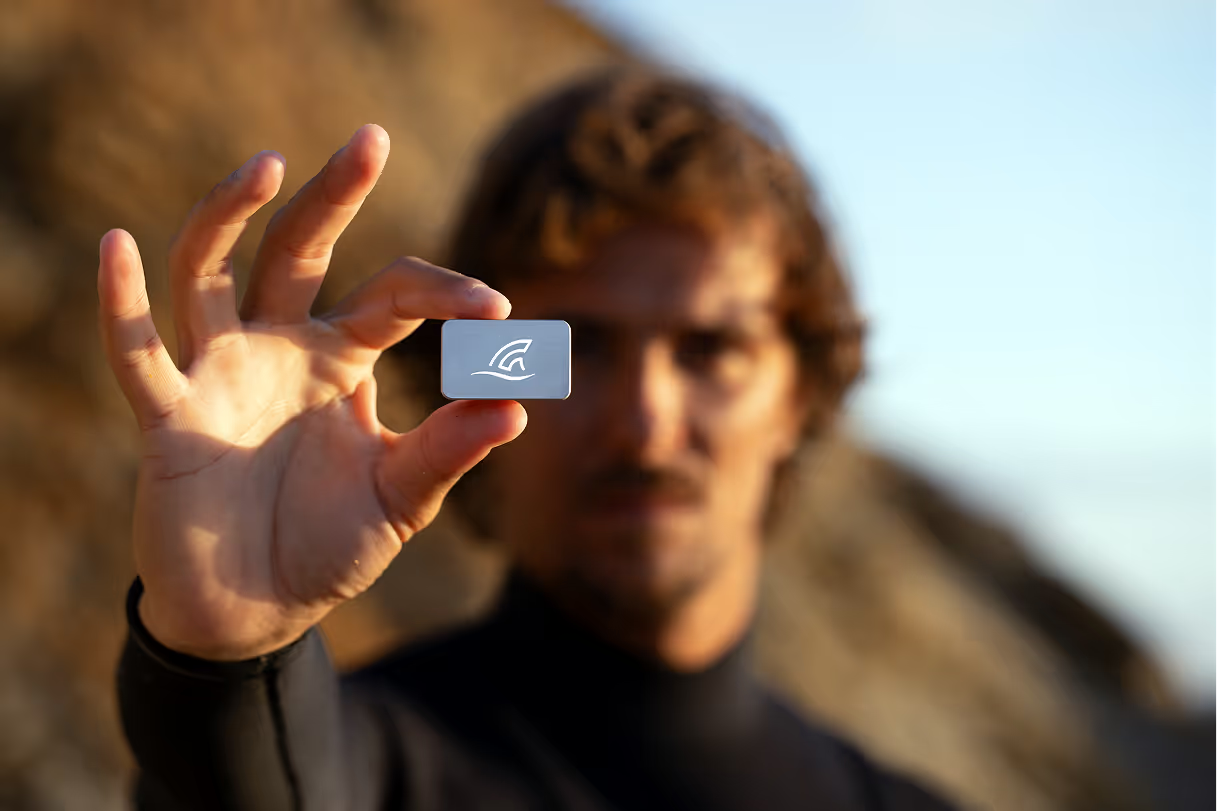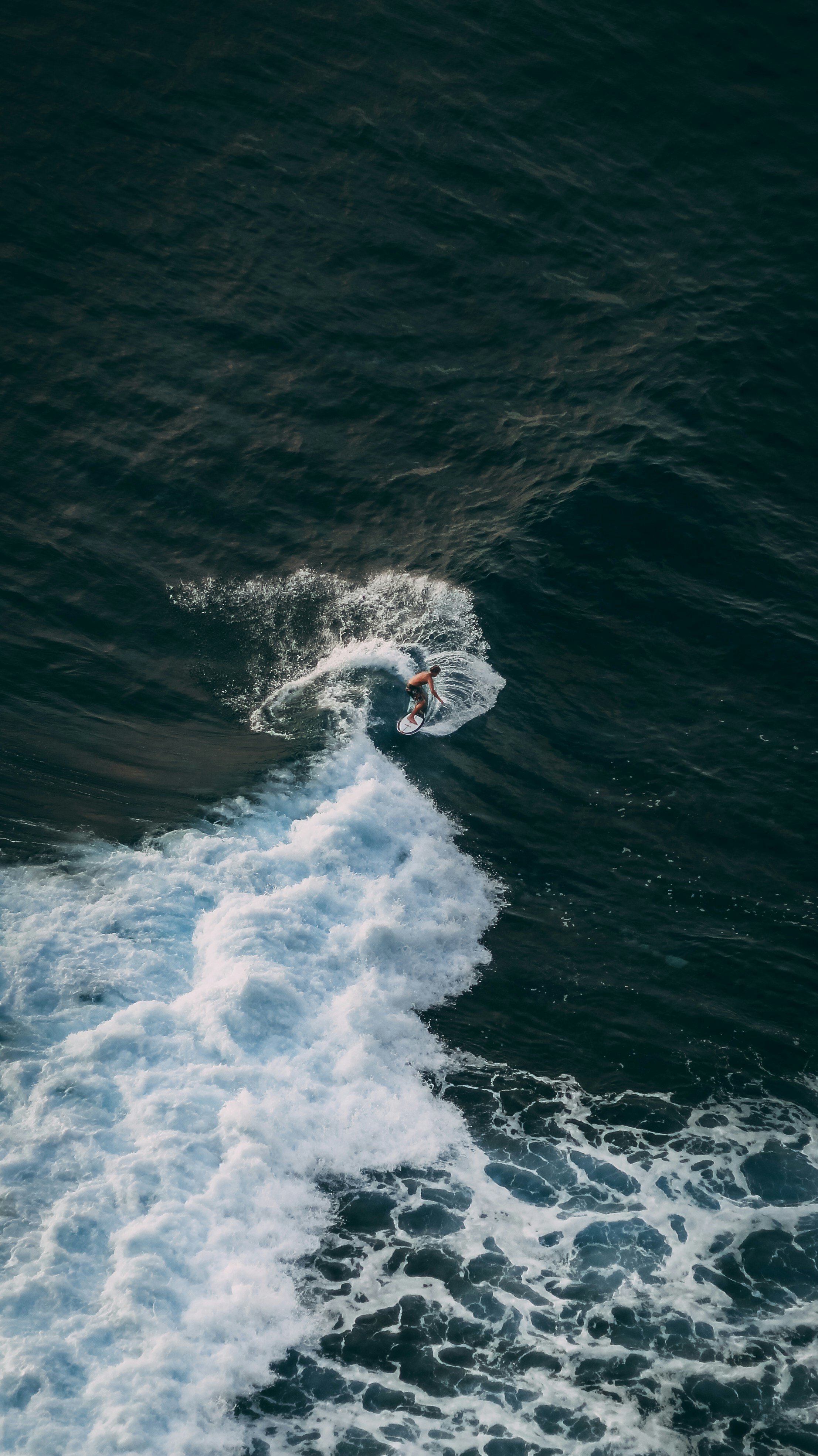Top Turn Carves: How to Hit the Lip with Control
Why the Top Turn Matters
A great top turn links your bottom turn to everything that follows—direction change, speed, and style. Unlike a fins-free snap, this is a carving turn off the lip: rail engaged, body rotating together, and a clean drive back down the face.
Common Top-Turn Mistakes
- Not Looking/Spotting the Exit – Staring at the spray or down at your board short-circuits the turn. Your head should lead toward the face; where you look is where you go.
- Stiff Upper Body – Trying to turn with hips only. Proper carves need full rotation: head → shoulders → hips → board.
- Staying Front-Foot Heavy (or Tail-Stomping Early) – Initiate with the back foot, but transition weight forward to drive out. All front foot = skip/under-pivot; all back foot = bog/stall.
- Incomplete Rotation – Checking out at 60–90° turns you into the shoulder. Commit to turning back down the face.
- Arm Errors – Counter-rotating arms kill flow. Lead arm points where you’re going; back arm balances over the rail.
How TRAX Helps You Nail the Carve
- Head/Rotation Cue – If direction change is <90°, TRAX prompts: “Turn head and shoulders sooner—spot the exit down the face.”
- Pressure Shift Cue – Reads back-foot spike at initiation then front-foot drive to exit. If you stay tail-heavy: “Transition weight forward to project out.”
- Rail & Roll Cue – Low roll angles = flat turns. “Engage more rail—lean into the carve.” Excess slide: “Smooth pressure to keep fins engaged.”
- Speed Cue – If you crawl out of the turn: “Match push to your speed—flow through, don’t jam.” If speed was high but angle small: “Use that speed—commit to a bigger arc.”
- Upper-Body Sync Cue – If pressure timing lags rotation: “Lead with torso; board will follow.”
Drills to Improve Top Turns
- Head & Shoulders Drill (Land) – Mark a target on a wall. Practice: look → lead arm points → shoulders/hips follow. (Optional: “pour the bottle over your shoulder” cue.)
- Surf-Skate Bank Carves – Mark an “X” as the lip. Look up to the X, then snap your gaze down the ramp as you rotate—head leads, board follows.
- 12-to-5 Drill (Water) – Aim for 12 o’clock at the lip, finish pointing to ~5 o’clock (regular on a right). Builds full rotation instead of check turns.
- Compression Cue (“Touch the Knee”) – Stay low. On forehand, try brushing your trailing knee with your front hand to enforce compression and rotation.
- Cutback→Top-Turn Combo – Do a roundhouse, rebound off foam into a quick top turn. The rebound forces commitment and flow into the next carve.
Stage-Specific Feedback
- Beginner/Transition: Keep it simple—look where you’re going, stay low, small carves on soft sections.
- Intermediate: Commit to rotation and complete the turn. If timid, choose friendlier, steeper sections and trust the rail.
- Advanced: Add variety—long gouges on open faces, tighter hits when it’s steep. Balance push with speed; keep arms calm and connected.
- Pro: Precision and strategy—vary arc, approach more vertical when the section allows, and keep exit speed high for immediate combos.
How TRAX Makes It Measurable
TRAX captures turn angle, roll (rail) engagement, pressure timing, and exit speed—so you can see if you truly carved, merely checked, or slid. Session to session, you’ll track deeper rail, earlier torso lead, cleaner exits, and higher post-turn speed.
Related Reading
- Bottom Turns – The Setup That Defines Your Surfing
- Complete Your Turns – Stop Cutting Them Short
- 5 Turning Mistakes That Keep You Stuck








